Ski:IQ 24 Nevado
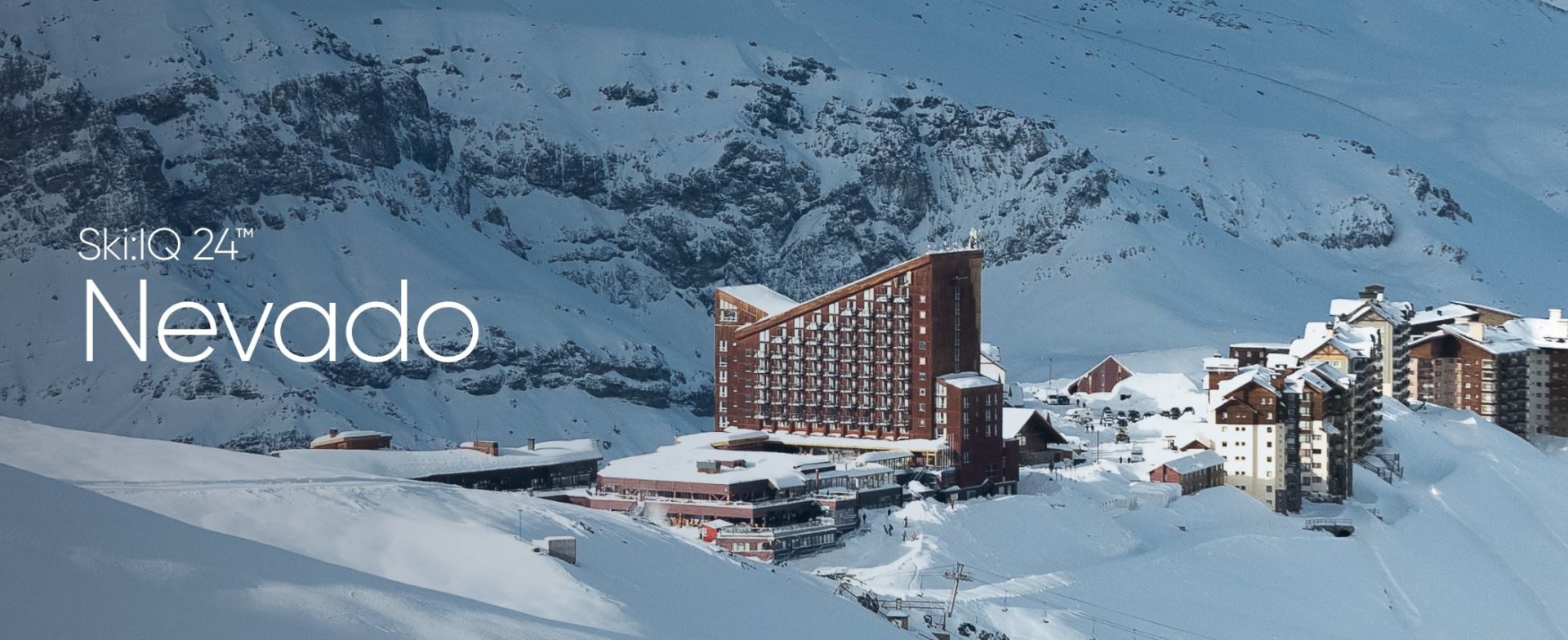
Votes:
When we set out to improve Carv, our goal is to make skiing even more fun by helping you to ski better.
Ski:IQ is our system to measure your skiing technique with multiple metrics and one overarching score. Every year our data science team analyzes hundreds of millions of turns and feedback from the world’s best instructors to update our Ski:IQ algorithm. Each Ski:IQ release is then a big step towards helping you ski better, but this release has been an even bigger step forward for the Carv ecosystem.
Historically, Carv was great at measuring on-piste skiing - just getting to that outcome was 6 years of work. But, if you left the groomers last year, Carv was not optimizing for the right things - it would tell you to get more edge angle in moguls, to apply too much outside ski pressure in powder.
We were all excited to build a system that measured great skiing on groomers. But we set out to measure great skiing. Period.
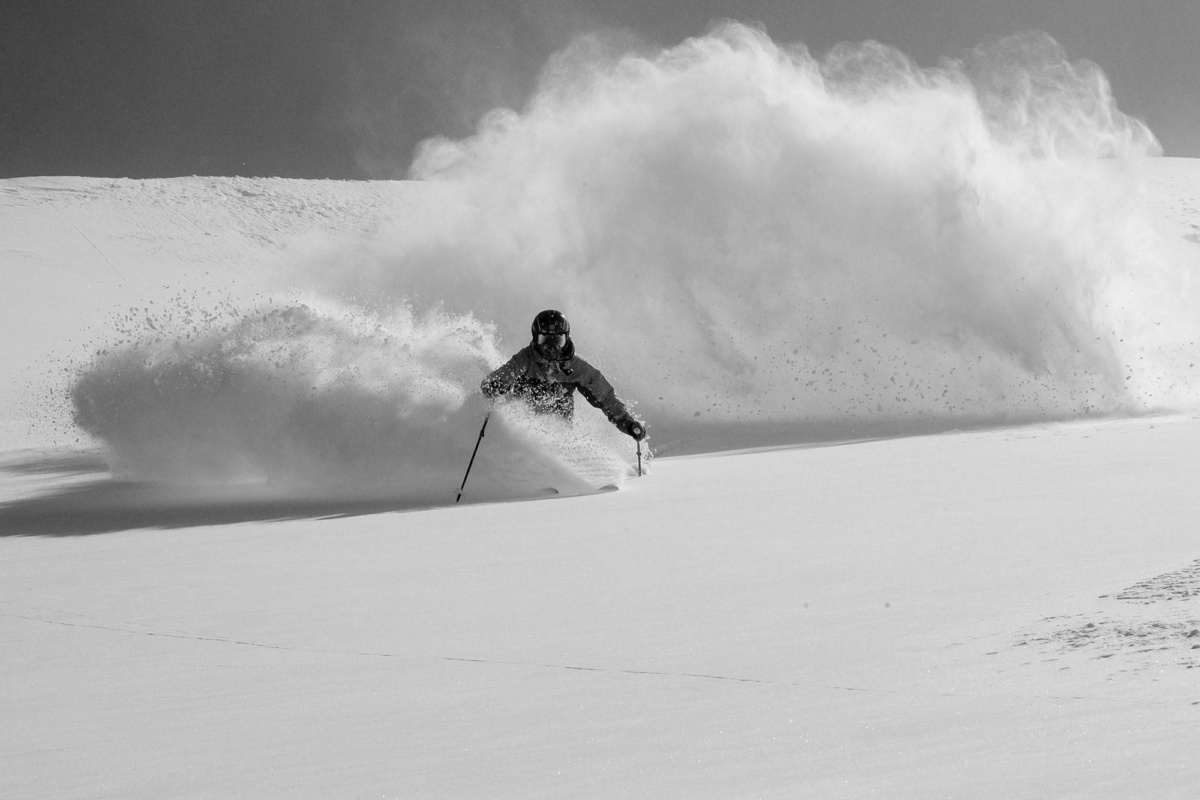
Great skiing.
(Image courtesy of Valle Nevado)
And great skiing is about more than great carving. Ask any top skier what their goal is - it’s usually about versatility. The ability to be comfortable, effortless, and look awesome in every terrain.
So with Ski:IQ Nevado, we had two goals - improve accuracy, and do so on every snow surface.
The clue is, of course, in the name: Nevado = Snow. And it’s an affectionate nod to Valle Nevado where we did a significant amount of testing this summer to build for our latest release.

It’s been an ambitious year for Carv, with new hardware, a new measurement system (Motion AI), new coaching software and of course, the Ski:IQ system (Nevado).
Our main goals were:
- To represent your skiing accurately in every terrain - not just on groomers.
- To help you use the app to analyze what’s actually happening when you ski so you can diagnose and change your technique faster.
- To give you more control over how you receive coaching.
There will be some things you’ll love and perhaps a few things you’ll miss from last year. Some of us will go up in our scores, some of us will go down. Sadly that is a natural outcome when we improve the modelling system. However, we’re really excited to see what you all think of this season’s app, it’s a huge step forward for the Carv community and we're incredibly grateful you are all joining us for the journey.
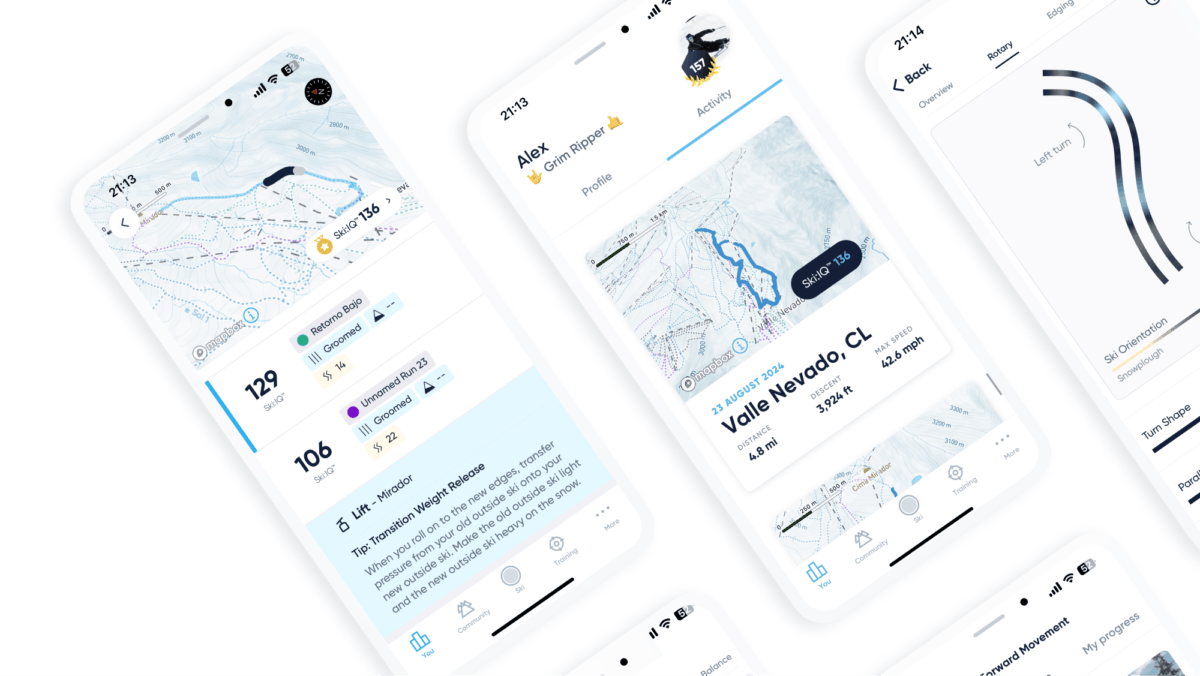
Ski:IQ Nevado
The headlines
- Ski:IQ Nevado is now live. Carv can now be used in every terrain.
- Compared to Ski:IQ 23 Hintertux, Ski:IQ 24 Nevado is measurably more accurate on groomed surfaces, and significantly more accurate on ungroomed terrain (moguls, powder, uneven) surfaces.
- It detects the snow much more accurately than any previous model thanks to a breakthrough in assessing snow surfaces.
- It detects and scores a wider variety of turns more accurately, especially short turns and skidded turns (which were scored poorly historically).
- We've significantly improved our balance metrics using motion data, and we have said goodbye to some of the weaker pressure metrics.
NB. After launch, we will be making additional refinements to the way Carv considers pitch in the Ski:IQ score. This will not affect the majority of skiers, however, we want to ensure that at the top level of the sport, skiing well on steeper pitches is being adequately rewarded. Only the best skiers can hold their technique together on steeps and we will spend November fine-tuning this effect with our athletes and pros.
What's new with Ski:IQ Nevado?
Metrics!
Metrics- these are the foundation of every Carv Ski:IQ system and there are some exciting changes this year.
NEW: Transition Weight Release
This new metric measures the vertical acceleration at transition - scoring the ability of the skier to unweight the skis. It’s not something we have measured before, so when we were developing it we were very excited.
This is because it is such a key skill in powder, moguls and crud skiing - as well as being an important component of piste skiing.
The new Transition Weight Release metric gives us a powerful tool to work on our 'all-terrain' skiing.
Of course, this is an extreme example, but the great thing is that Carv now measures a metric that is so important in becoming a rounded all-mountain skier.
IMPROVED: Early Forward Movement
It seems counterintuitive to be able to measure balance better with motion than with pressure - but we’ve been able to increase the accuracy of this important metric. When discussing the move to Carv 2, one of our key criteria was to retain and improve our balance scoring - balance is such a key part of our skiing learning pathway, it was essential work for our Motion AI system.
Thanks to some incredible work by the team we’ve discovered a new signal in the data that drives our new early forward movement metric:
- When a great skier moves forward at the initiation of a turn
- They move their center of mass forwards, over their skis (base of support)... down the hill into the turn.
- Carv 2 actually notices that the feet, relative to the skier decelerate.
- Now the body has led into the turn, the feet are then ‘pulled forwards’, following the body, creating a spike in acceleration that Carv can accurately detect with the new Motion AI.
Early Forward Movement - shown here on a rolling mat so the skier is stationary and we can see all the forces at work.
If a skier moves forward early and actively into the turn, your skis will accelerate (measured in the direction of the ski). If the skier doesn’t move into the turn with their body first, the feet do not follow (they are leading the turn), and the acceleration spike doesn’t show up.
No early forward movement - no spike in acceleration.
It might feel imperceptible to many of us still learning, but the data is crystal clear when this balance move is executed well. A common way instructors teach this skill is not to ‘try and get forward’ but to ‘pull your feet back’ at initiation.
Where it shows up:
- Dynamic skiing with lots of early forward movement
- In moguls, powder, groomers
Where it won’t show up:
- Unbalanced skiing
- Skiing ‘backseat’ with no early forward initiation
- Balanced skiing but not dynamic skiing - eg. snowplough
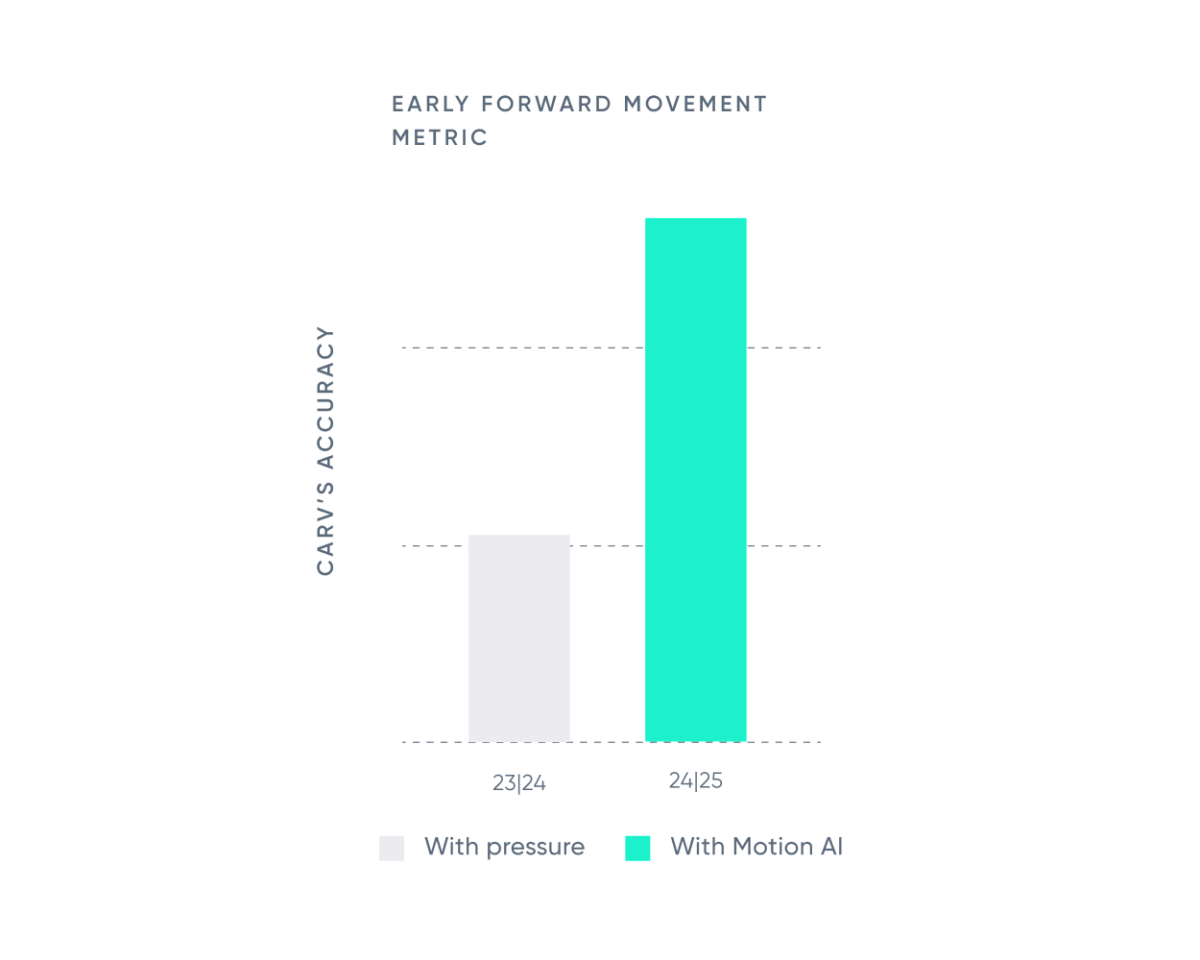
IMPROVED: Mid-Turn Balance
Using the same methodology as above, during the middle phase of the turn, the best skiers have a clear signal: a smooth reduction in boot acceleration - which only happens because their feet are moving underneath them during the middle of the turn. Relatively speaking, this happens when the body is ‘centered’ over the bindings

Real Carv data from possibly the smoothest balancer out there: Morgan Engel, showing the acceleration and deceleration phases of the ski created by exceptional balance.
IMPROVED: Parallel skis
The old iteration of this metric was very critical on small deviations throughout the turn. But we know that the best skiers still make small adjustments to parallel skis throughout the turn - that it is functional and part of good skiing. So we were being overly critical in a manner that was not supporting better skiing.
The new Nevado parallel ski metric looks for the largest converging ski angle and the largest diverging ski angle and rewards skiers who keep these numbers low - but it doesn’t punish small variations.
For example, it will recognize stem christie / stepped turns and score them down, but won’t punish carving skiing with slight variations. We found that this approach is much more highly correlated with ability.
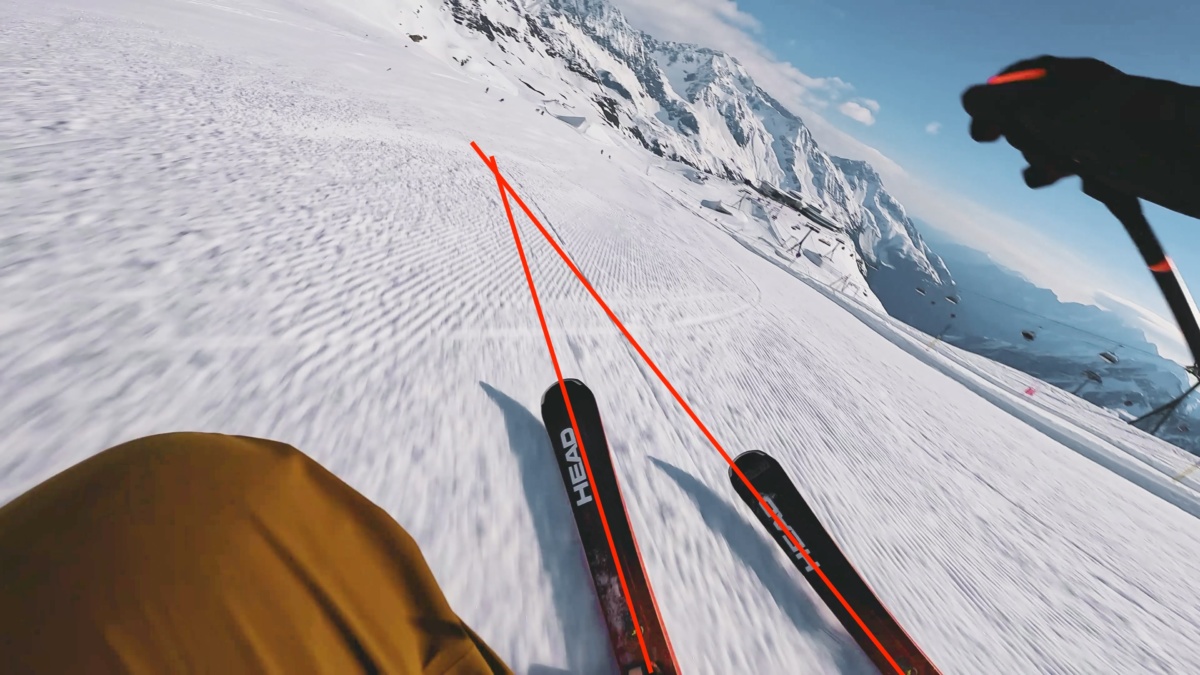
Great carving skiing sometimes has little convergence/divergences like that shown here, which thankfully will no longer be punished by Carv
Charlie, our lead data scientist is particularly excited about this one:
“I’m really excited about this metric. It should allow intermediate and advanced skiers not feel so penalized when they are already parallel - e.g when carving."
Using this metric, you can make meaningful progression from wedge to parallel which will be a great ride for learners.
GONE: Outside Ski Pressure
This is an important skill in skiing, but the reality was that Carv’s outside pressure metric suffered from reliability issues in some cases. Carv measured it well for many users, but it was susceptible to boot interference for some users - which meant it wasn’t that reliable to use at scale in real-time training.
In addition, there is no ‘good answer’ to how much outside pressure to have, making it hard to score. We shouldn’t always be ‘standing on our outside ski’ and different terrain requires different use of this skill.
When we reviewed the system we always knew that these metrics contributed poorly to the overall accuracy (measured by Sam's Tau, which compares Carv’s rankings of every level of skier to known instructor rankings of the same skiers).
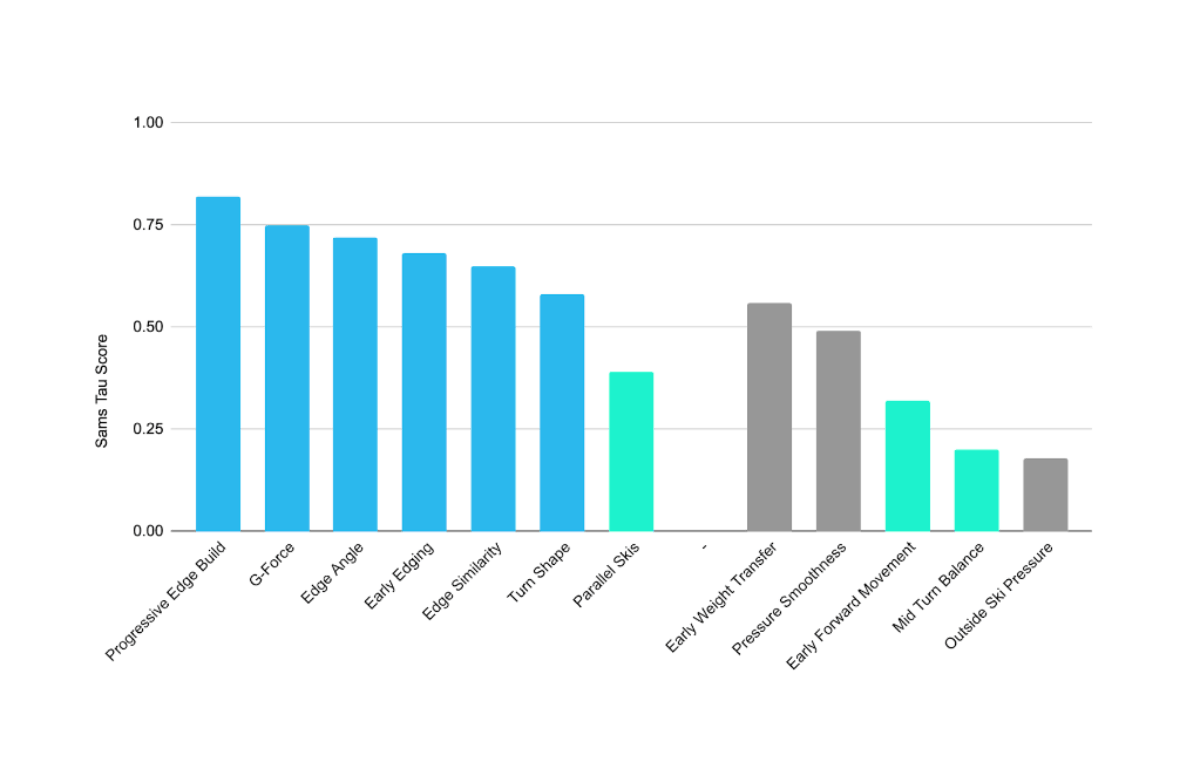
In the contribution of each metric to Ski:IQ accuracy, pressure metrics were generally weaker.
Note, this is 2023 data. The metrics in green were rebuilt for motion and are about 2x as accurate. The ones in gray are now removed from the system.
We appreciate this is a sad loss for skiers working on this metric, but the concept is still something Carv will teach, as it is a common input that affects other metrics that we measure. Over time we will look for signals that we can introduce to better measure this skill.
GONE: Early Weight Transfer (replaced with transition weight release)
EWT was a great metric that measured the transition of weight between feet early in the turn - it was measured directly through pressure sensor change.
However, we felt that benefits gained in the motion system, outweighed the loss of this specific metric. Particularly because we are now able to measure transition weight release which is a similar, powerful transition metric. Needless to say, EWT was one of our favorites. RIP.
All-terrain: How it works
Once we have the metrics, the next big factor in your system is how all those scores knit together to form your Ski:IQ.
Ski:IQ Nevado has some major changes of course.
Detecting terrain
Thanks to you, our amazing users, we’ve been able to take your terrain labels last year and create a powerful model that scores the snow surface automatically. We used over 200,000 labelled video sessions to train this model combined with your terrain labels.
Carv is now using acceleration and motion data detected through the sensor to automatically detect the terrain as you ski with great accuracy.
- In Nevado, Carv will automatically tag your segments by the snow surface (groomed, moguls, powder, uneven), making it easier to see your performance in each terrain.
- You will get tips tailored to the terrain you just skied
- The Ski:IQ algorithm can be weighted and scored appropriately based on the terrain.
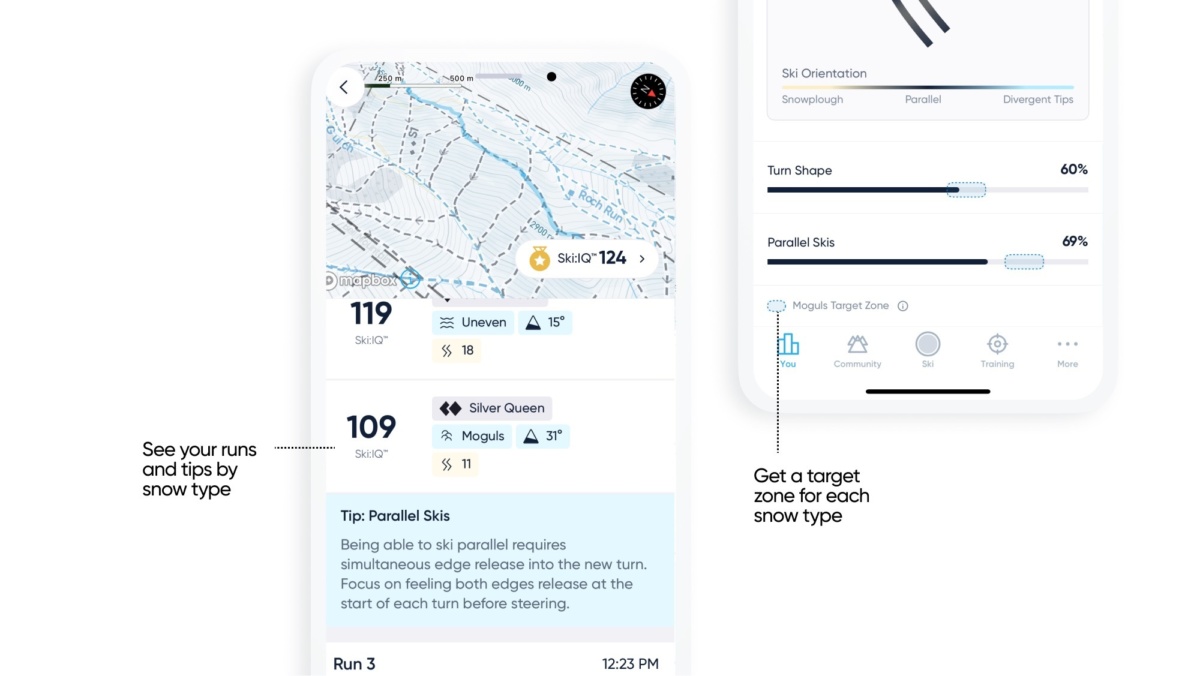
Coaching in terrain
When you ski with Carv, it calculates your Ski:IQ based on a set of weightings of each Metric, which are combined to give your Ski:IQ.
In previous IQ systems, that was the same weighting, wherever you ski. But an instructor wouldn't judge the skills in moguls, powder, groomers the same. And they wouldn’t judge a lower level skier and an expert in the same way.
With Ski:IQ Nevado, Carv will now use a dynamic weighting system for each metric that is based on your ability, the pitch, and the snow surface.
In simplified terms:
- When you ski on a groomer, it is likely to prioritize edging metrics like edge angle, early edging.
- When you ski in moguls it is likely to give more importance to vertical release, parallel skis, balance
- When you ski in powder it’s prioritising metrics like turn shape and edging similarity
What does this mean for me?
It’s a much more versatile system than we’ve ever had before. Ski:IQ24 Nevado is more accurate in every terrain than Ski:IQ Hintertux was on just groomers.
That’s a pretty amazing feat.

Remember we test this against how instructors grade a known bank of video sessions of skiers of every level in every terrain.
Specifically, we test Carv’s ability to agree with a panel of the world’s best instructors on what level a given skier is. This year to accommodate the new terrain and to drive more accuracy we’ve grown that labeled database from 50,000 labeled segments last year to 200,000 —a massive leap in the volume of labeled data. The sheer scale allows us to build more robust models and improve overall accuracy.
Every year we’re proud to push our Ski:IQ system forwards, and this year has been a huge leap for Carv.
There will still be areas to improve - trying to describe something as complicated and multifactorial as skiing with just one algorithm is a lifetime of work. We rigorously test our system to ensure we’re putting out a significantly stronger system every year so that if you optimize for Ski:IQ, Carv will be making you a better skier.
There will be ‘winners’ and ‘losers’
If you’ve skied with Carv before, now comes the painful part…
We have a product principle that we reprocess any previous sessions under the new algorithm. Even ones from previous years.
- We do this because it is our most accurate way of showing your skiing.
- And it allows you to compare this year's scores to historic scores and track your improvement on a consistent playing field.
When we design a new algorithm, we aim for an average change of 0 Ski:IQ points, but Carv will rescore some people up and some people down. That can be very painful if you worked hard for that 150 and now your skiing being tagged as a 140. Trust us, we all feel it in our team too, some people go up, some go down.
Let's show our working
Firstly, SkiIQ is a distribution. We expect that an average skier in the world (not on Carv) might score 100. The median for Carv skiers, who are a bit ahead of the pack, is usually between 115-120.
With each Ski:IQ update we control the distribution of each Ski:IQ so the way the population breaks down remains roughly the same each update. Here is the score this year vs last year’s release.
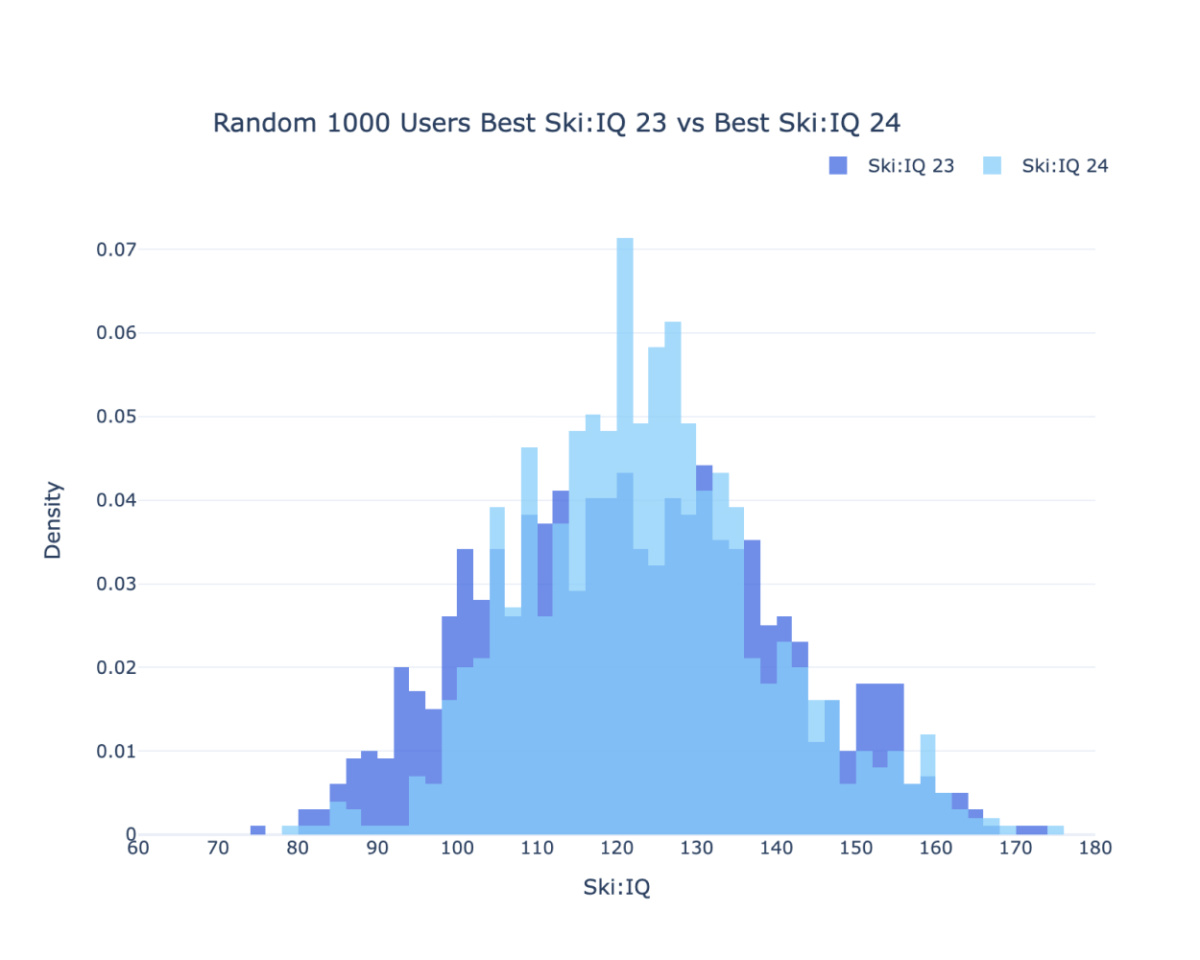
Ski:IQ Nevado is the transparent blue so we can see the distributions sitting on top of each other.
And for reference here is the distribution of how the scores are changing in the ecosystem.
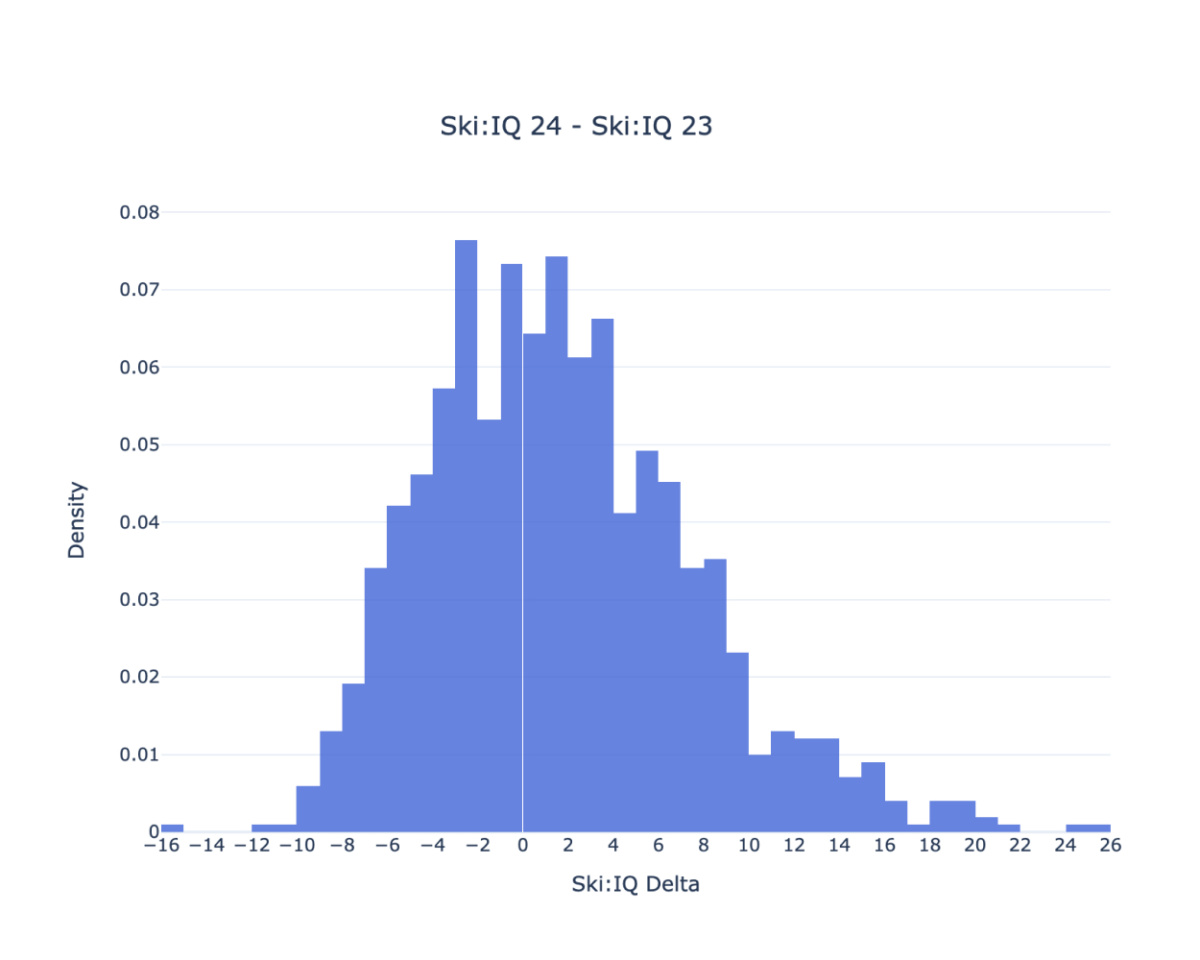
We can see that most skiers do not change more than a few points. A few skiers are being rescored with a more significant change of 5-10 points or above. Some of the largest improvements in scores are often because of better accuracy of Ski:IQ across ungroomed snow surfaces (uneven, moguls, powder) that were previously scored low.
If you went up, great!
If you went down, we’re sorry! But as it’s a truer score, please know that your improvement will be rewarded. As you get back to your old score you’ll be improving your skiing to do it and we’re more confident that you should chase this score than previous systems.
This means that you’ll feel better when you ski and your friends will notice you ripping.
Coaching
Finally, 3 major changes in how the app is coaching you..
We wanted to give you some exciting new tools to improve your scores this year. As we make Carv more accurate at diagnosing you, we also strive to make it more accurate as a coach.
1. Turn shape graphs
Firstly, instead of just giving you a % score, we wanted to show you what’s ACTUALLY happening when you ski.
Motion AI enables us to show your actual turn shape and the timing of how you’re using your skis. And the awesome thing is that will vary from run to run.
Great instructors will tell you to look back and see your tracks - or even to follow their tracks. Carv now gives you that for posterity - and it shows your previous data as well. This is pretty exciting as we can all go and diagnose our own skiing with personalized data.
Here is an illustrative example with a less good segment (a 120) - a stronger one (135), and a great one (150). This shows a combined view of the turns in the segment (it uses the median of the turns which means the worst turns are not included).
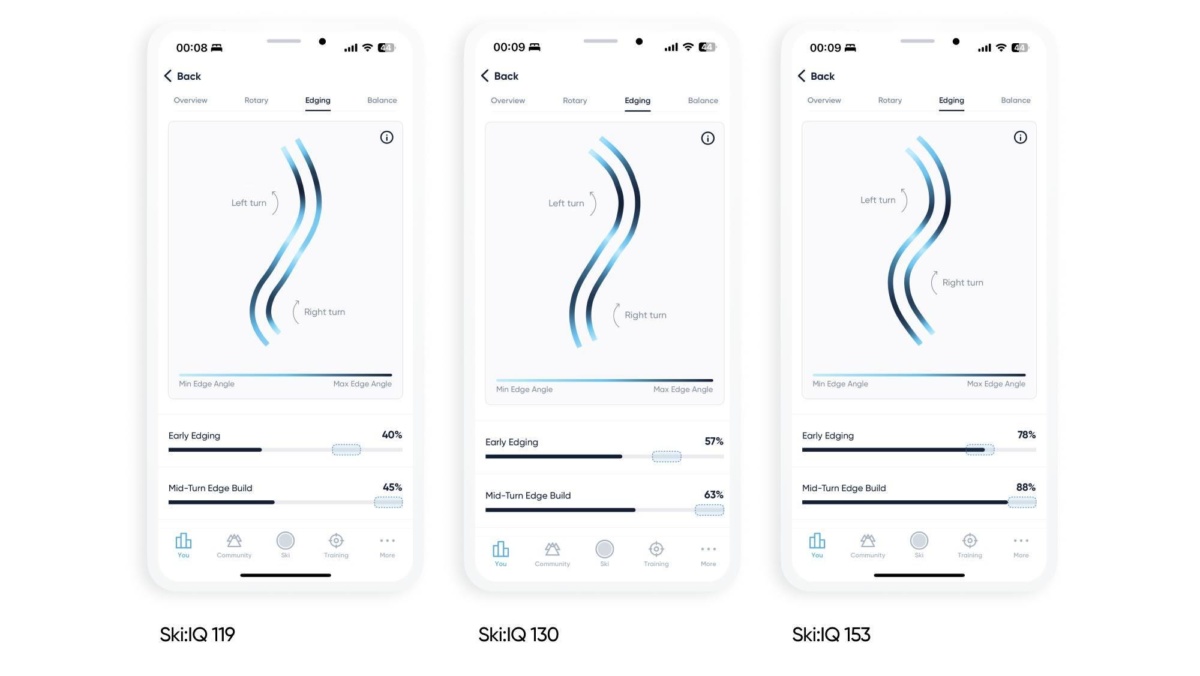
We can quickly see that the edging is much stronger when turning right.
In the better segments, there are visibly smoother, rounder turn shapes and the exact timing of the edging changes can be seen clearly.
2. More contextualisation
To aid with increased context, in the app you will notice much clearer tags so you can browse and dive into the segments that mean the most to you.
Look for snow surface tagging, Ski:IQ scores and pitch labeling.
After all, the terrain and our score are what matter most to us when we’re reviewing the day.
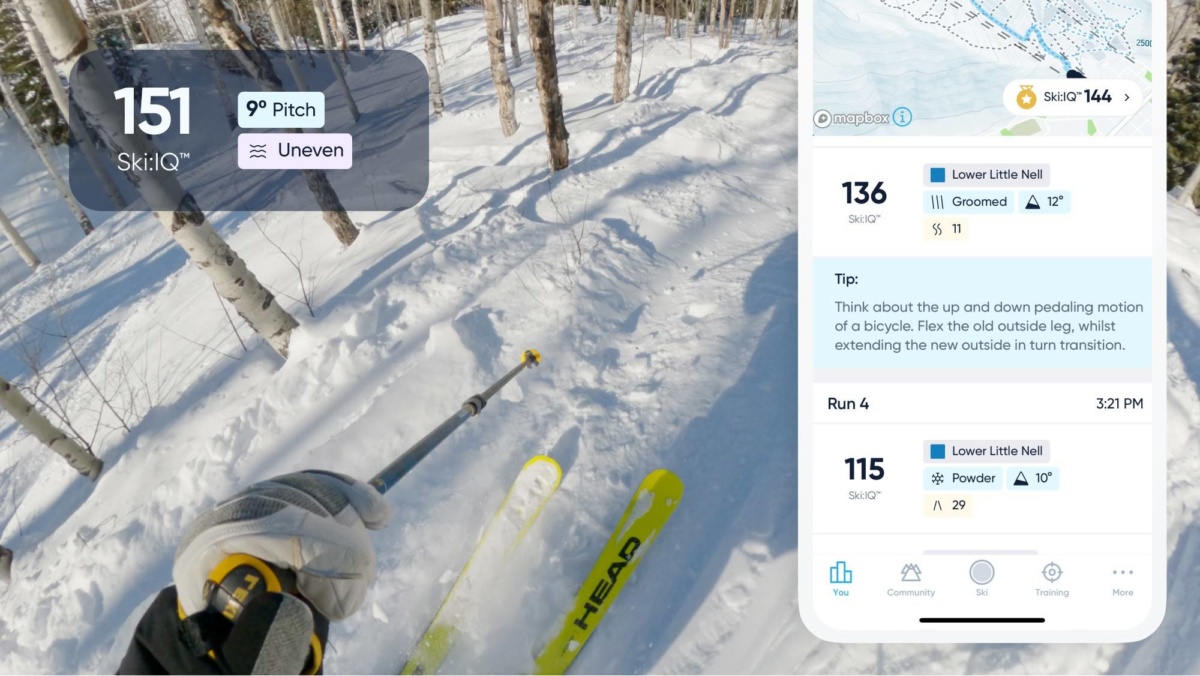
Simpler Coaching Choices
Coaching Modes are gone
Long live ‘coaching’
Carv had some wonderful modes, but you often told us that selecting them was hard work. You didn’t like making trade-offs on what data you would get from each mode, and the targets often did not adapt well to the snow surface, or adapt as you got tired throughout the day.
We want you to focus on skiing, so our goal this year is to give you the level of coaching that you want, when you want it, in one customizable system.
So now we have one mode to rule them all: Coaching.

With the latest Carv Coach you can:
- Turn audio coaching on or off
- Select which metric to focus on
- or have it intelligently chosen for you based on recent skiing
- choose what kind of feedback you’ll get (data only, tips, turn-by-turn coaching)
- And where you’ll get it
In the Ski tab, you simply press ‘Ski’ and customize your Real-time Audio settings at any point. No matter which settings you choose, you’ll always get access to all of your data for those segments.

If you loved turn-by-turn training, like Train with an Olympian, you can still get that feedback; you can choose the metrics, and it even adapts to the terrain as you ski.
If you loved skiing in silence and looking at your data after - you can certainly do that.
By pulling the best aspects of these modes together we have been able to unify Carv’s data and coaching into a single ‘brain’. With a single coaching platform, Carv can better adapt its coaching to the snow, use your latest skiing data to recommend the level of the targets, and give you celebrations and the same level of data - no matter what coaching you select.
So while we lose our old modes, we have built the best of these into a more data-rich, customizable coaching solution.
Despite losing the Train with an Olympian mode, we certainly have not lost our favorite Olympian. We have always built Carv with the input of experts like Ted Ligety, and will continue to do so. In fact, we are extending our athlete program (announcements coming soon) as we build out our coaching across different types of terrain.
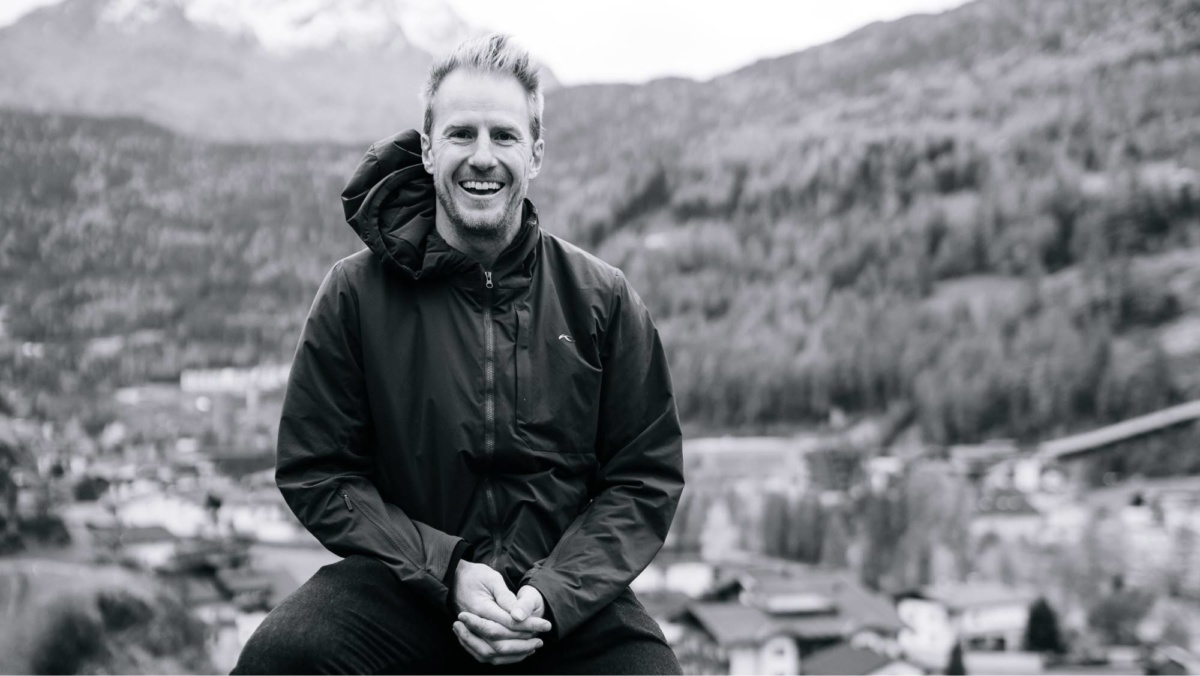
Ted has been instrumental in our development over the last few years and we can't wait to share more of his amazing experience with you.
What’s next
- Go download the app and have a look at your Nevado scores, and your turn shape graphs.
- Be aware we are refining pitch optimisation in November.
- Go and score some powder and go and improve in moguls.
- If you have any questions on the update, please see our FAQs here
From all of us at Team Carv, we hope you love the changes and it helps you ski even better this year - because better skiers have more fun!
